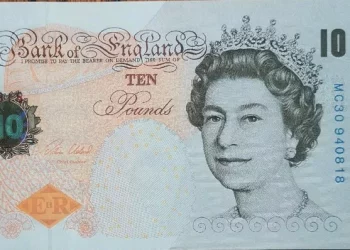Currency often bears symbols and figures that reflect a nation’s history and culture. In the United States, one bill stands out as unique and often overlooked—the $2 bill. While its existence is widely known, its significance and the individuals depicted on it remain shrouded in mystery. This article aims to delve into the secrets behind the $2 bill, uncovering the figures that grace its surface and shedding light on their historical relevance.
Thomas Jefferson: The Founding Father and Architect of Democracy
-
Thomas Jefferson’s Significance:
The prominent figure showcased on the $2 bill is none other than Thomas Jefferson, one of America’s Founding Fathers. Jefferson played a pivotal role in drafting the Declaration of Independence and was the third President of the United States.
-
Symbolism of Inclusion:
By featuring Thomas Jefferson, the $2 bill celebrates his contributions to the formation of American democracy and emphasizes the importance of the principles of liberty, independence, and equality.
-
Jefferson’s Legacy:
Known for his intellectual prowess and advocacy for individual rights, Jefferson’s influence is reflected in the inscription on the $2 bill: “The United States of America – In God We Trust – E Pluribus Unum.”
Monticello: An Architectural Masterpiece and Jefferson’s Legacy
-
Monticello’s Significance:
The reverse side of the $2 bill showcases the stunning Monticello, Thomas Jefferson’s estate located in Virginia. This architectural marvel represents Jefferson’s passion for innovation, design, and the pursuit of knowledge.
-
Symbol of Enlightenment:
Monticello symbolizes the ideals of enlightenment, showcasing Jefferson’s belief in the power of education, scientific progress, and the pursuit of knowledge to shape a prosperous society.
-
Historical Preservation:
By featuring Monticello on the $2 bill, the United States acknowledges Jefferson’s role in shaping American architecture and his enduring legacy as a visionary leader.
The American Bald Eagle: A Symbol of Freedom and Resilience
-
Eagle’s Representation:
Another significant element on the $2 bill is the portrayal of the American bald eagle, an emblematic bird that symbolizes freedom, strength, and resilience.
-
National Symbol:
The bald eagle became the national emblem of the United States in 1782, chosen for its majestic appearance and its association with liberty and independence.
-
Cultural and Historical Importance:
By featuring the bald eagle, the $2 bill serves as a reminder of the nation’s commitment to the values and ideals that have defined America throughout its history.
The $2 Bill and its Unique Status
-
Rarity and Collectibility:
The $2 bill stands out from other denominations due to its relative rarity in circulation. While still produced by the U.S. Mint, it is less commonly used in everyday transactions, making it a popular item among collectors and enthusiasts.
-
Cultural Significance:
The $2 bill has gained cultural significance beyond its monetary value. It has been featured in literature, films, and artwork, often associated with curiosity, luck, or historical references. This cultural relevance further adds to its mystique and appeal.
-
Tradition and Superstition:
The $2 bill holds a special place in certain customs and traditions. For instance, it is sometimes given as a gift for good luck or as a token of appreciation. In some regions, it is believed to bring prosperity and positive fortune to its bearer.
Historical Context and Revival
-
Historical Circulation:
The $2 bill has a long history of circulation in the United States. It was first introduced in 1862, and its production continued until 1966 when it was temporarily discontinued due to limited demand.
-
Reintroduction and Modern Usage:
In 1976, during the bicentennial celebration of the United States, the $2 bill was reintroduced. Since then, it has been periodically produced, primarily for commemorative purposes and to meet collector demand.
-
Commemorative Editions:
The $2 bill has been issued in special editions to honor notable figures, events, or landmarks. These commemorative editions further contribute to the cultural significance and collectibility of the bill.
Conclusion:
The $2 bill, featuring Thomas Jefferson, Monticello, and the American bald eagle, holds a unique position in the United States currency. Its depiction of historical figures, architectural masterpieces, and national symbols reflects the nation’s heritage, values, and aspirations. Despite its relative rarity in circulation, the $2 bill has gained popularity among collectors and carries cultural significance beyond its monetary value. Understanding the figures and symbols on the $2 bill not only unveils historical connections but also highlights the cultural and artistic richness embedded in our currency. As the $2 bill continues to captivate our imagination, it serves as a tangible reminder of America’s past and a celebration of its enduring ideals.
Related Topics:
- The Rising Strength of the USD: An In-depth Analysis
- How Much is $1000 AUD in USD: A Comprehensive Guide
- Exploring the Worth of $100 USD in AUD: A Guide



























